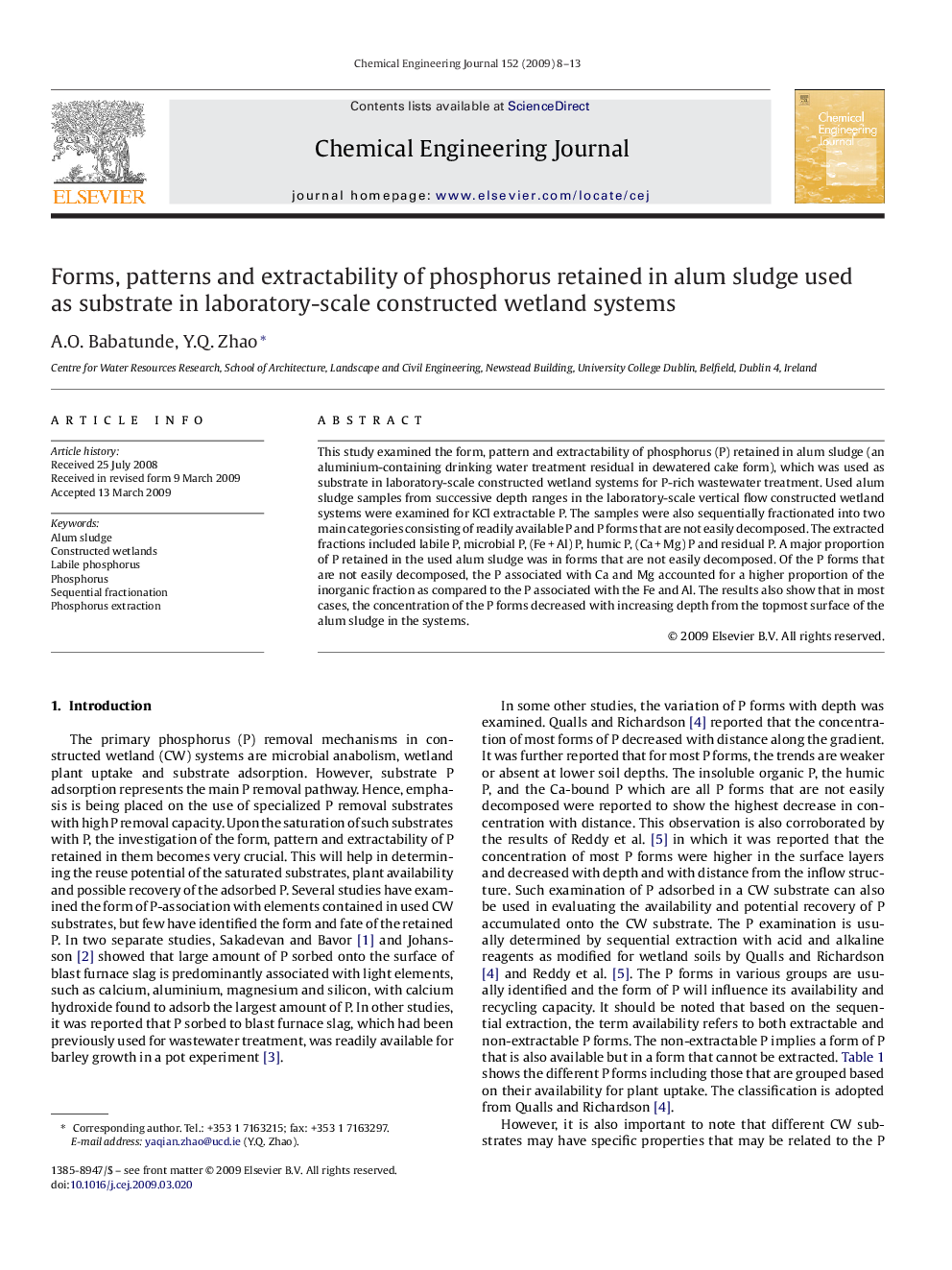| Article ID | Journal | Published Year | Pages | File Type |
|---|---|---|---|---|
| 153623 | Chemical Engineering Journal | 2009 | 6 Pages |
This study examined the form, pattern and extractability of phosphorus (P) retained in alum sludge (an aluminium-containing drinking water treatment residual in dewatered cake form), which was used as substrate in laboratory-scale constructed wetland systems for P-rich wastewater treatment. Used alum sludge samples from successive depth ranges in the laboratory-scale vertical flow constructed wetland systems were examined for KCl extractable P. The samples were also sequentially fractionated into two main categories consisting of readily available P and P forms that are not easily decomposed. The extracted fractions included labile P, microbial P, (Fe + Al) P, humic P, (Ca + Mg) P and residual P. A major proportion of P retained in the used alum sludge was in forms that are not easily decomposed. Of the P forms that are not easily decomposed, the P associated with Ca and Mg accounted for a higher proportion of the inorganic fraction as compared to the P associated with the Fe and Al. The results also show that in most cases, the concentration of the P forms decreased with increasing depth from the topmost surface of the alum sludge in the systems.
